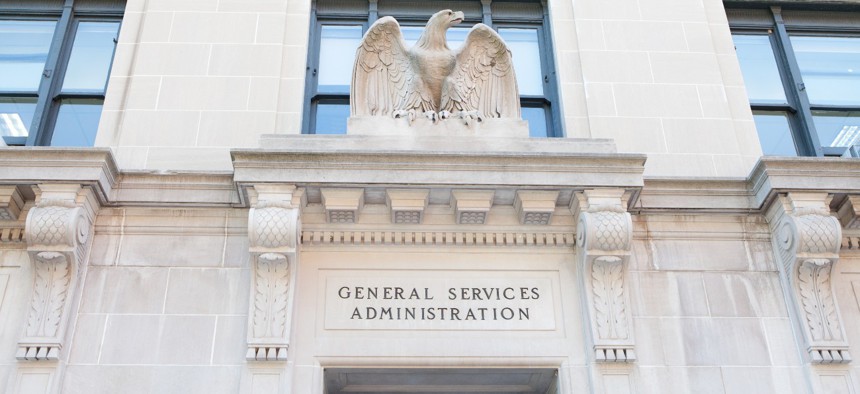
Mark Van Scyoc / Shutterstock.com
New Executive Order Seeks to Put Federal Buildings in Disadvantaged Areas
The General Services Administration will develop a plan to implement the directive.
President Trump signed an executive order earlier this week to prioritize putting new federal buildings in economically challenged areas.
The president signed an executive order on Monday to build on a December 2018 order to “prioritize or focus” investment of federal resources and programs in economically distressed areas, such as “opportunity zones.” The 2017 tax reform law created the “opportunity zone” program, which provides certain tax incentives for investors in about 8,800 disadvantaged areas. Along with the order, the administration released a report that said the initiative brought over $75 billion of private investment into disadvantaged communities, as of the end of 2019.
“Under orders signed by previous administrations, federal agencies were instructed to give first consideration to locating facilities in central business districts,” which “were often the most expensive areas of urban centers, both costing taxpayers more dollars and sinking federal investment into areas that were often not in need,” said a release from the White House. “Meanwhile, ‘opportunity zones’ and other distressed communities offer lower costs and are in need of the investment that a government site location can bring.”
The order says that the General Services Administration ––which helps agencies build and acquire offices and owns and leases about 9,600 buildings in over 2,200 communities nationwide–– will come up with a plan to carry out the order. A GSA spokesperson told Government Executive on Wednesday there is no set time frame yet for implementation, but officials are working on further guidance to agencies. “GSA will not receive any of the tax benefits that private companies do in the ‘opportunity zones,’” said the spokesperson.
“We are excited to now officially include qualified ‘opportunity zones’ in the list of priorities we formally assess when selecting sites,” said GSA Administrator Emily Murphy on Tuesday. The “executive order is consistent with GSA’s long term role in spurring economic development within the communities where our buildings are located.” She also noted that her agency has already been working with “opportunity zones” since the 2018 order was signed.
Norman Dong, managing director at the real estate brokerage firm FD Stonewater, who previously served as GSA’s Public Buildings Service commissioner, told Government Executive he “saw first-hand how decisions on where to locate federal leased facilities can be a force-multiplier to support local economic development objectives.” He cited how the federal government helped transform the NOMA, Capitol Riverfront and Southwest neighborhoods in Washington, D.C., by putting agency offices there.
The new order shows “there is much more that can be done, not just here in our nation’s capital, but across the country,” Dong said. “By using the purchasing power of the federal government, we can fulfill the space and facilities needs of our federal agencies while achieving the full economic potential of these neighborhoods.”
The signing of the executive order coincided with the start of the Republican National Convention. Ahead of the four-night event, the Trump campaign listed expanding opportunity zones as one of the priorities on its second-term agenda.







